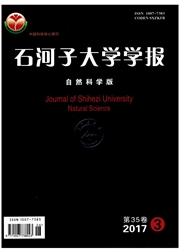

 中文摘要:
中文摘要:
为探讨人乳头瘤病毒(Human papilloma virus,HPV)16 L1 蛋白表达与宫颈癌发生与发展的关系,为防治宫颈癌奠定基础.采用收集宫颈癌患者 48 例、 宫颈上皮内瘤样病变 (cervcal intraepithelial neoplasia, CIN) 患者 41 例和慢性宫颈炎患者 30 例石蜡组织标本用于免疫组织化学实验的方法.检测 HPV16 L1 蛋白在宫颈癌组织、 CIN 组织和慢性宫颈炎组织中的蛋白质表达状况. HPV16 L1 蛋白质免疫组织化学实验的结果显示, 慢性宫颈炎组织中阳性率为 100%, 而在宫颈癌组织中阳性率仅为 27.1%,差异有统计学意义( 〈0.01) .慢性宫颈炎组织的阳性率明显高于宫颈癌组织.由此可知, HPV16 L1 蛋白质在宫颈原位癌开始表达减少,宫颈浸润癌表达减少更明显,可能可以用于诊断CINII 和 CINIII 或 CINII 和宫颈癌.
 英文摘要:
英文摘要:
To elucidate the relationship between the expression of human papilloma virus (HPV) 16 L1 protein and thedevelopment and progression of cervical cancer, and to laya foundation for the prevention and treatment of cervical cancer. 48patients with cervical cancer, 41 patients with cervical intraepithelial neoplasia (CIN) and 30 patients with chronic cervicitis paraffinembedded specimens were used for immunohistochemistry. Detected the expression of HPV16 L1 protein in cervical cancer tissues,CIN tissues and chronic cervicitis tissues. The results of HPV16 L1 protein with immunohistochemistry showed that the positive rateof chronic cervicitis was 100%, while the positive rate in cervical carcinoma was only about 27.1%, and the difference wasstatistically significant渊 〈0.01冤. The results indicated that the positive rate of chronic cervicitis was significantly higher than that ofcervical cancer. It can be seen that the expression of HPV16 L1 protein in cervical carcinoma in situ is decreased and theexpression of HPV16 L1 protein is decreased more significantly in cervical carcinoma, which may be used to diagnose CINII andCINIII or CINII and cervical cancer.
 同期刊论文项目
同期刊论文项目
 同项目期刊论文
同项目期刊论文
 期刊信息
期刊信息
